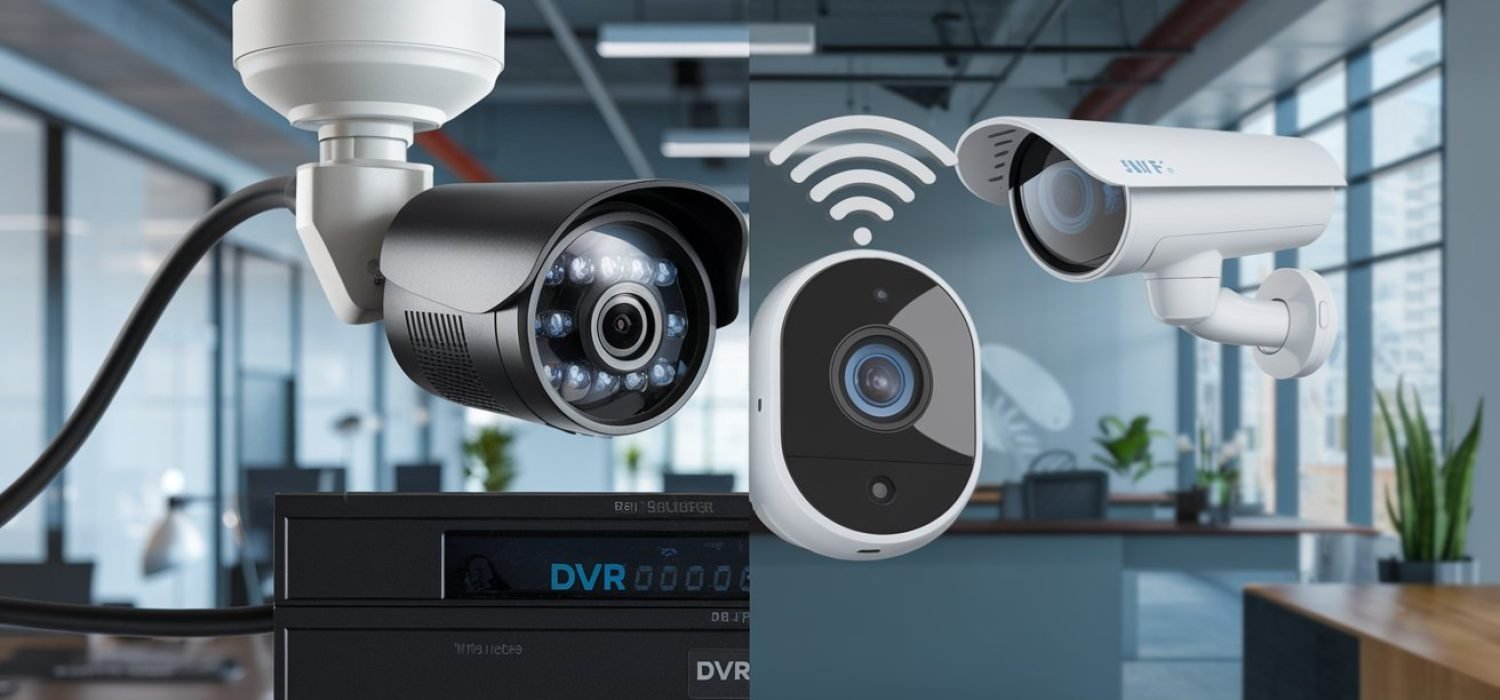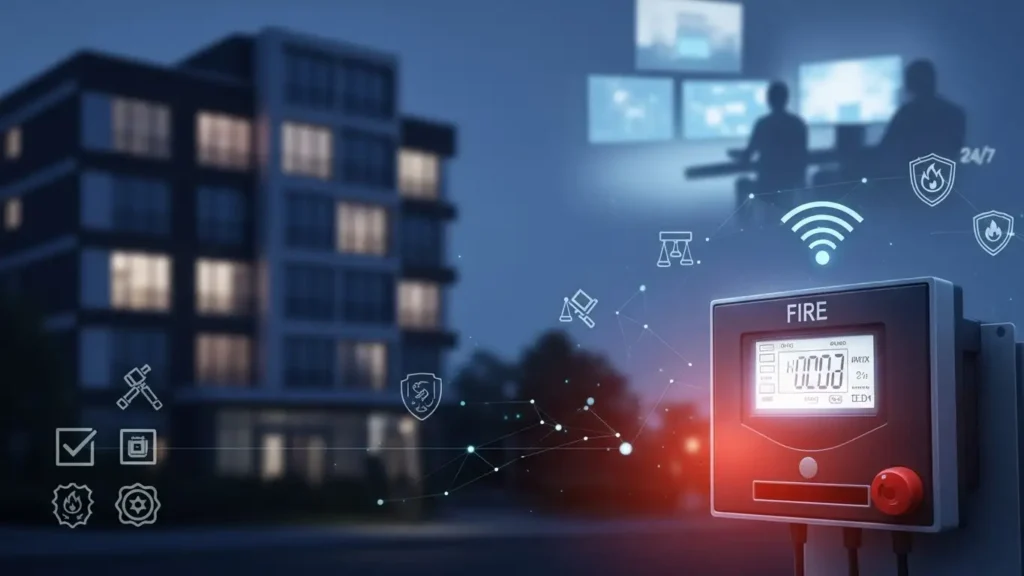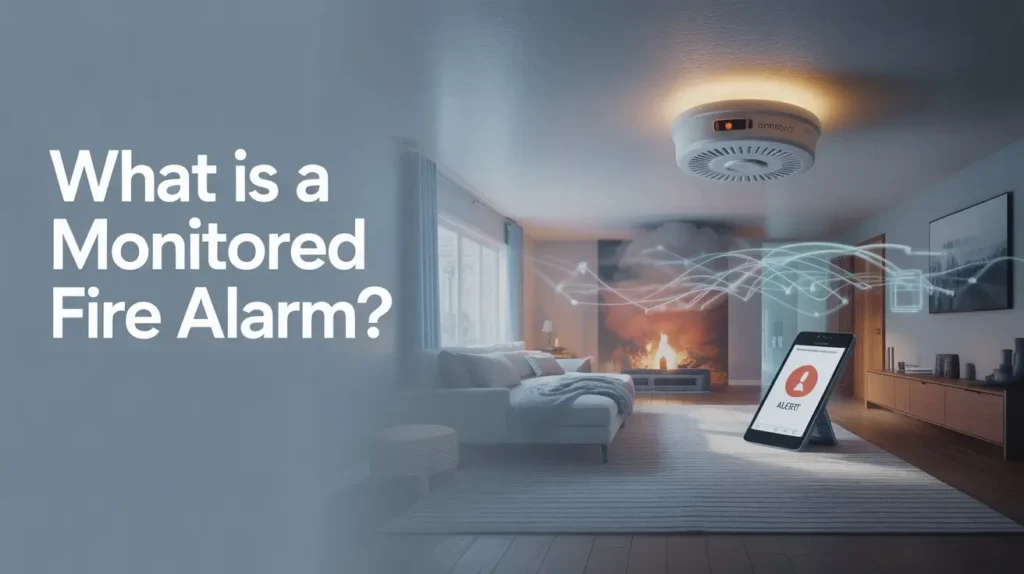In today’s rapidly evolving technological landscape, safeguarding our properties has become more sophisticated than ever. A pivotal decision in enhancing security is choosing between wired and wireless security cameras. This article delves into the intricacies of both systems, providing a detailed comparison to assist you in making an informed choice.
Types of Surveillance Cameras
Surveillance cameras come in various types, each designed for specific security needs. Below are the most common types and their key features.
1. Dome Cameras
These cameras have a dome-shaped design that makes it difficult to determine their direction. They are commonly used in indoor and outdoor environments for general surveillance.
Best for: Retail stores, offices, and hotels.
2. Bullet Cameras
Bullet cameras are cylindrical and highly visible, making them effective deterrents. They offer long-range viewing and are often used for outdoor surveillance.
Best for: Parking lots, building exteriors, and large properties.
3. PTZ (Pan-Tilt-Zoom) Cameras
PTZ cameras can move left, right, up, down, and zoom in on specific areas. They are ideal for monitoring large spaces where active tracking is required.
Best for: Airports, stadiums, and high-security areas.
4. C-Mount Cameras
These cameras come with detachable lenses, allowing users to adjust the field of view based on their needs.
Best for: Industrial areas, warehouses, and highways.
5. Thermal Cameras
Thermal cameras detect heat instead of visible light, making them effective for night vision and harsh weather conditions.
Best for: Military surveillance, border security, and fire detection.
6. IP (Internet Protocol) Cameras
IP cameras transmit footage over the internet, enabling remote access and cloud storage. They offer high-resolution video and are widely used in modern security systems.
Best for: Smart home security, offices, and public spaces.
7. Wireless Cameras
These cameras operate over Wi-Fi, eliminating the need for extensive wiring. They are easy to install and often support remote viewing.
Best for: Small businesses, homes, and temporary setups.
Each type of surveillance camera has its strengths, making them suitable for different security applications. Choosing the right one depends on your specific monitoring needs.
What are Wired Security Cameras?
Wired security cameras are surveillance systems that use physical cables to connect the camera to a recording device, such as a Digital Video Recorder (DVR) or Network Video Recorder (NVR). These cameras are powered through a direct electrical connection, ensuring continuous operation without relying on batteries or Wi-Fi signals.
Key Features of Wired Security Cameras
- Stable and Reliable Connection – Since they transmit data through cables, wired cameras provide a steady and uninterrupted video feed, free from wireless interference.
- High-Quality Video – Wired systems support higher bandwidth, allowing for superior video resolution and clearer images.
- Continuous Power Supply – Unlike battery-operated cameras, wired security cameras remain operational as long as there is power.
- Greater Security – With no wireless transmission, wired cameras are less susceptible to hacking and signal interference.
Types of Wired Security Cameras
- Analog Cameras – These cameras transmit video signals to a DVR via coaxial cables.
- IP Cameras – Internet Protocol (IP) cameras connect through Ethernet cables and transmit high-resolution digital footage to an NVR.
Pros and Cons of Wired Security Cameras
✔ Advantages:
- Reliable and interference-free performance
- High-resolution video output
- No dependence on Wi-Fi signals
- More secure against cyber threats
✖ Disadvantages:
- Complex installation due to wiring
- Limited placement flexibility
- Requires professional setup in many cases
Where Are Wired Security Cameras Used?
Wired security cameras are ideal for businesses, large properties, banks, government facilities, and areas where long-term security is a priority. Their reliability makes them a preferred choice for professional surveillance setups.
What are Wireless Security Cameras?
Wireless security cameras are surveillance cameras that transmit video and audio signals over Wi-Fi or other wireless networks, eliminating the need for physical cables. These cameras are commonly used for home and business security due to their ease of installation and flexibility in placement. They can be powered by either rechargeable batteries or a wired power source.
Key Features of Wireless Security Cameras
- Wire-Free Transmission – Video footage is sent over Wi-Fi to a cloud server, Network Video Recorder (NVR), or a mobile device, allowing remote access.
- Easy Installation – Without extensive cabling, these cameras can be set up quickly, making them ideal for DIY installations.
- Remote Monitoring – Most models support real-time viewing and alerts via mobile apps, providing access from anywhere.
- Battery or Plug-In Power Options – Some models are fully wireless with batteries, while others require a power cable but still transmit data wirelessly.
Types of Wireless Security Cameras
- Wi-Fi Cameras – Connect to the internet via a wireless network and store footage on the cloud or a local storage device.
- Battery-Powered Cameras – Fully wire-free, running on rechargeable or replaceable batteries.
- Solar-Powered Cameras – Use solar panels to keep the battery charged, making them ideal for outdoor use.
Pros and Cons of Wireless Security Cameras
✔ Advantages:
- Flexible placement without cable restrictions
- Quick and easy installation
- Remote access via mobile apps
- Scalable and easy to expand
✖ Disadvantages:
- Dependence on Wi-Fi signal strength
- Potential signal interference from walls or electronic devices
- Battery-powered models require periodic recharging
- Susceptible to hacking if not properly secured

Where Are Wireless Security Cameras Used?
Wireless security cameras are ideal for homes, small businesses, apartments, and locations where running cables is impractical. They are perfect for users who want a flexible, easy-to-install security solution with remote access capabilities.
Comparative Analysis: Wired vs. Wireless Security Cameras
To provide a clearer perspective, let’s examine the key differences between wired and wireless security cameras:
Factors to Consider When Choosing Between Wired and Wireless Security Cameras
Selecting the right security camera system depends on several factors, including installation requirements, reliability, and intended use. Below are key considerations to help determine whether a wired or wireless security camera is the best choice for your needs.
1. Installation Complexity
- Wired Cameras: Require professional installation due to cabling for power and data transmission. Running wires through walls and ceilings can be labor-intensive.
- Wireless Cameras: Easier to install as they do not require extensive wiring, making them a better option for DIY setups.
✔ Choose wireless if you need a quick and flexible installation.
✔ Choose wired if you want a permanent and stable setup.
2. Connection Reliability
- Wired Cameras: Offer a stable and interference-free connection, ensuring continuous video recording.
- Wireless Cameras: Depend on Wi-Fi signals, which can be affected by distance, walls, or electronic interference.
✔ Choose wired if you need a consistent and uninterrupted feed.
✔ Choose wireless if you have a strong Wi-Fi network and need flexible placement.
3. Video Quality
- Wired Cameras: Support higher bandwidth, allowing for superior image resolution and clarity.
- Wireless Cameras: Can have lower resolution or occasional lag due to Wi-Fi limitations.
✔ Choose wired for high-definition surveillance and large coverage areas.
✔ Choose wireless for moderate-quality surveillance with remote access.
4. Power Source and Backup
- Wired Cameras: Operate continuously without battery concerns but may stop working during power outages unless connected to a backup power source.
- Wireless Cameras: Battery-powered models continue functioning during outages but require regular charging or replacement.
✔ Choose wired if you want continuous surveillance without battery maintenance.
✔ Choose wireless if you need cameras that can work during power failures.
5. Security and Hacking Risks
- Wired Cameras: Less vulnerable to hacking since they do not rely on wireless networks.
- Wireless Cameras: Can be hacked if not secured properly but offer encryption and password protection options.
✔ Choose wired for maximum cybersecurity.
✔ Choose wireless if you take proper security measures like encryption and strong passwords.
6. Flexibility and Scalability
- Wired Cameras: Have fixed locations due to cable restrictions, making relocation difficult.
- Wireless Cameras: Can be easily moved or expanded without additional wiring.
✔ Choose wired if you have a fixed surveillance area.
✔ Choose wireless if you need to adjust or expand your system frequently.
7. Cost Considerations
- Wired Cameras: Higher upfront costs due to professional installation and wiring.
- Wireless Cameras: Lower initial costs but may require additional expenses for cloud storage or battery replacements.
✔ Choose wired if you want a long-term investment with minimal maintenance.
✔ Choose wireless if you need a budget-friendly, easy-to-maintain system.
Final Decision: Which One Should You Choose?
- Wired Security Cameras are best for businesses, large properties, and locations requiring high security and stable connections.
- Wireless Security Cameras are ideal for homes, rental properties, and areas where flexible placement and remote access are priorities.
By evaluating your specific security needs, you can choose the best surveillance system to protect your property effectively.
Conclusion
Both wired and wireless security cameras have distinct advantages and limitations. Your choice should align with your specific security needs, property characteristics, and personal preferences. By carefully evaluating the factors outlined above, you can select a system that provides optimal protection for your premises.





